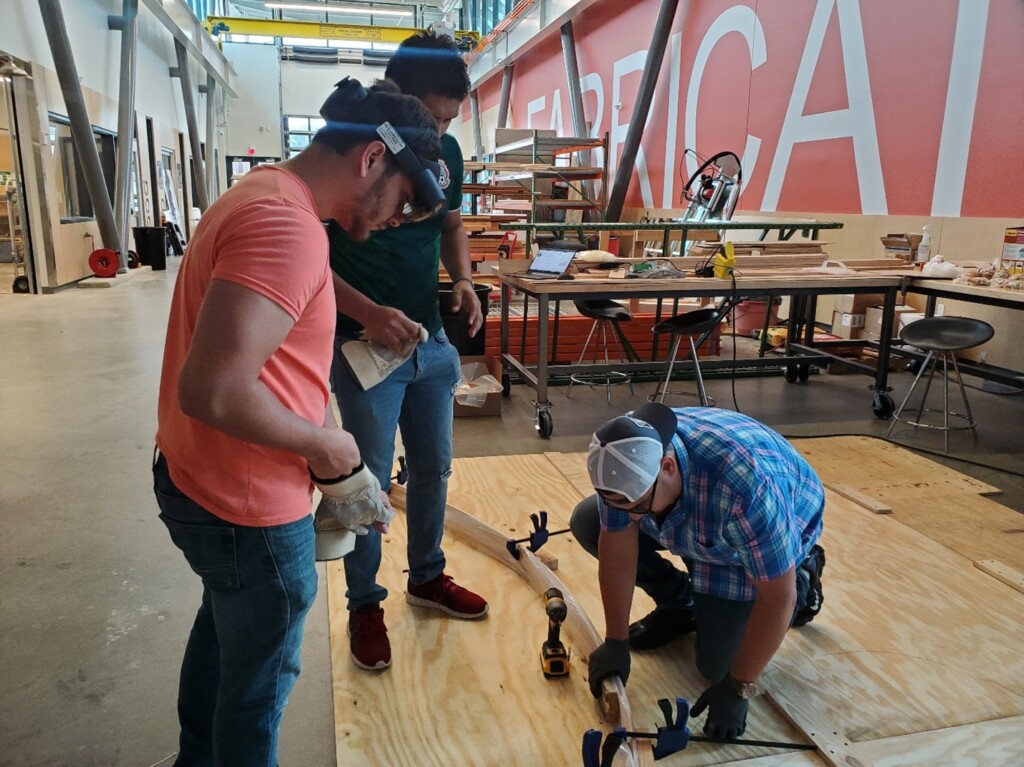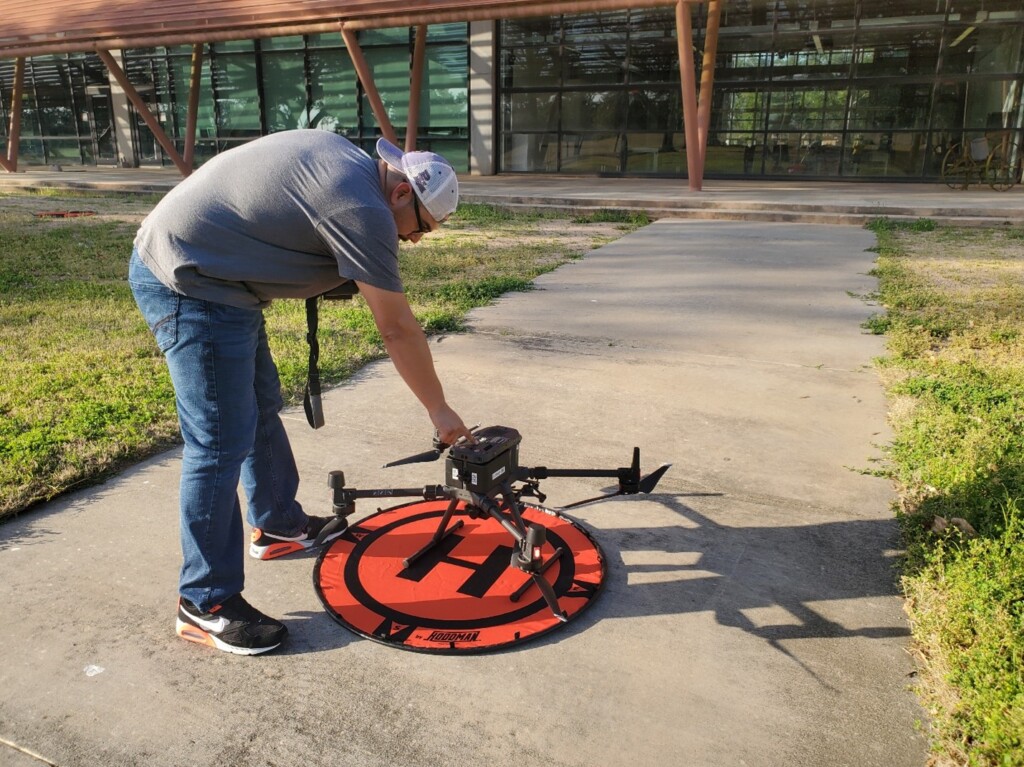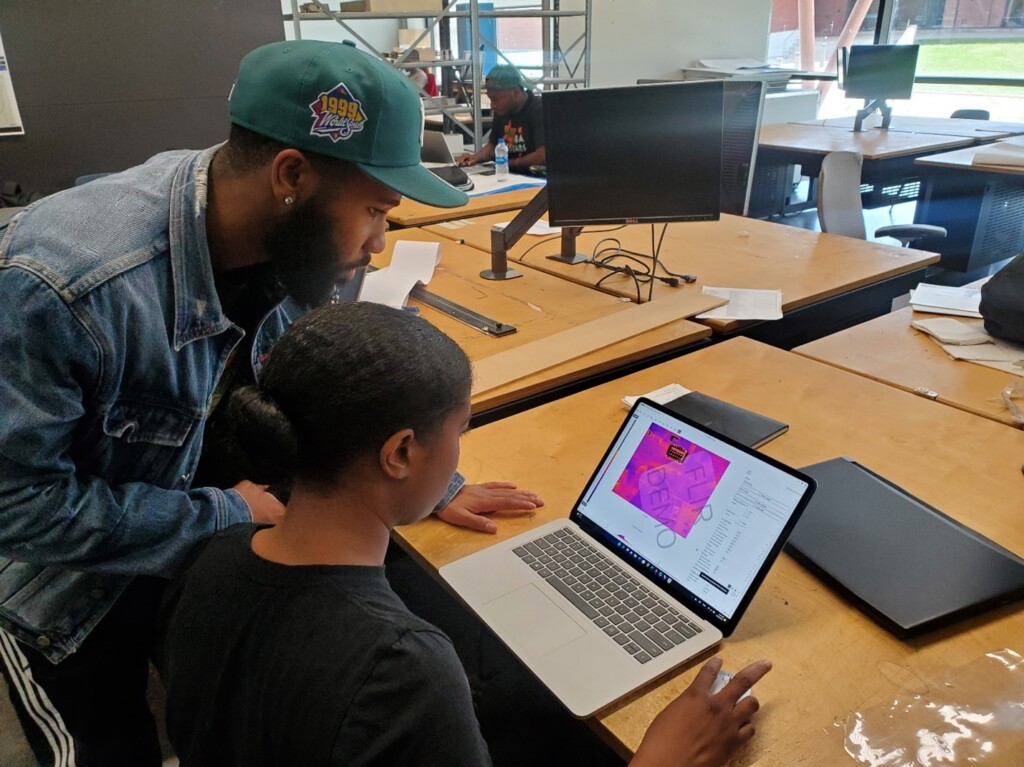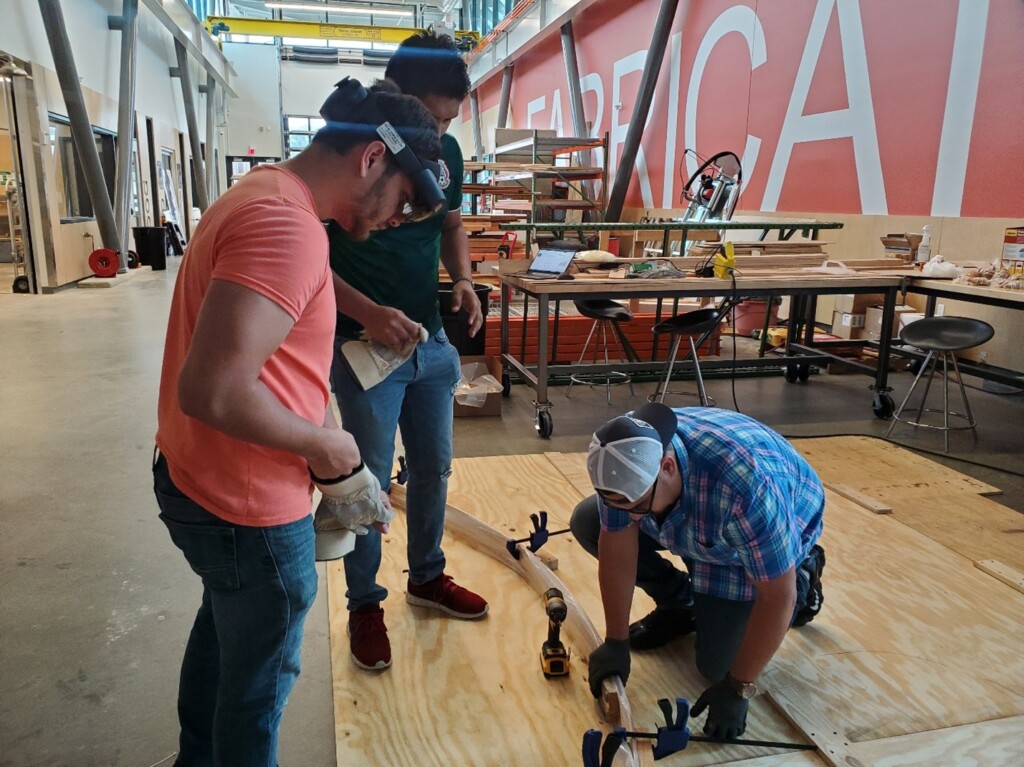PVAMU’s AI+HPB Lab Leading the Charge in Sustainable Building Design
PRAIRIE VIEW, Texas (Feb. 27, 2025) – Addressing the growing need for sustainability, Prairie View A&M University’s Artificial Intelligence for High-Performance Buildings (AI+HPB) Lab is at the forefront of transforming building design, construction, and operation. The lab’s core mission is to integrate artificial intelligence into architecture and urban planning to create more intelligent and energy-efficient structures. Structures are significant contributors to global carbon emissions, and the lab addresses this by using AI to reduce energy waste, enhance occupant comfort, and lower costs.
The AI+HPB Lab, under the School of Architecture (SOA), was initiated with a $400,000 grant from Title III and later received an additional $100,000 from the National Science Foundation. This funding supports Dr. Rania Labib, associate professor in the SOA and the lab’s director, in developing larger grant proposals. Through this support, the lab is exploring AI-driven innovations to address real-world issues in sustainable building design. AI provides the capability to process vast amounts of data and forecast building performance, enabling architects and planners to make informed decisions that promote energy efficiency and sustainability.

One of the driving motivators behind the lab’s creation was the slower adoption of AI within the architecture, engineering, and construction (AEC) industry. While other sectors are experiencing an AI revolution, its implementation in sustainable design is limited. The lab aims to bridge this gap by showcasing how AI can optimize energy use, enhance natural lighting, and support climate-responsive urban planning. This work not only advances research but also equips students and professionals with the skills needed for careers in green building design, urban planning, and energy efficiency consulting.
A significant development at the lab is the new course, AI for AEC, which is expected to launch in Fall 2025, pending approval. The course offers hands-on experience with AI tools and trains students in using data-driven insights to address sustainability challenges. Students participating in the course will have opportunities to work on real-world projects related to sustainable design, energy efficiency, and construction management, preparing them for this rapidly evolving industry.

The lab has advanced research with studies on AI-powered daylighting simulations, which is helping architects maximize natural light while decreasing the need for artificial lighting. Other projects have included AI-driven models designed to predict daylight performance and computer vision techniques used to detect glare on building facades, improving both energy efficiency and occupant comfort.

Looking ahead, the lab plans to expand its focus into urban-scale AI modeling, climate adaptation planning, and the development of AI tools to help architects and city planners make data-driven sustainability decisions. With the rising demand for AI-driven solutions in sustainable design, the AI+HPB Lab’s work is becoming increasingly relevant and is gaining recognition in academic and professional spheres. Dr. Labib has been invited to speak at institutions such as The University of Texas at Austin and The University of Houston, amplifying the lab’s influence.
In conclusion, the AI+HPB Lab at PVAMU is well-positioned for future growth. As AI continues to reshape architecture, applications in energy optimization, generative design, and material analysis will be essential in the fight against climate change. The lab’s work demonstrates that AI is more than just a tool for efficiency; it’s also a catalyst for a greener future, preparing the next generation of architects, engineers, and urban planners to lead the way toward a more sustainable built environment.


